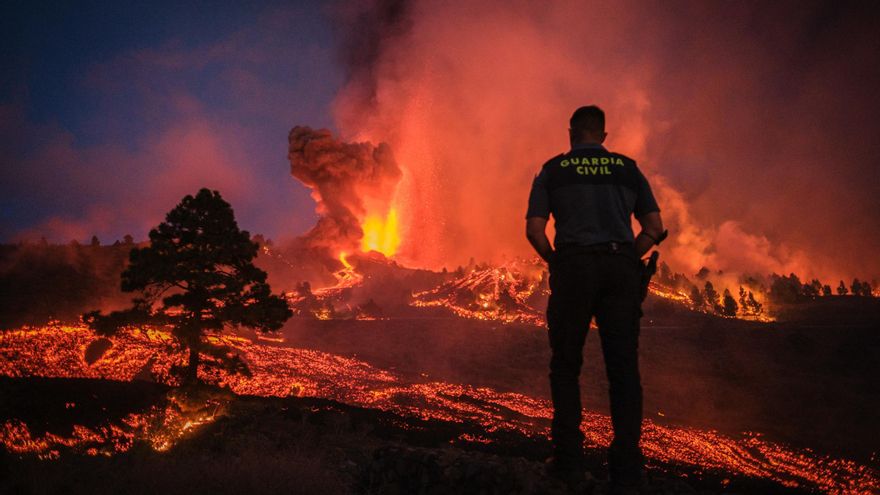A New Era for Volcanic Research in Spain
Tenerife and La Palma are on the verge of becoming Spain’s undisputed capitals for the study and monitoring of volcanoes. Their joint candidacy is the clear frontrunner to host the new National Volcanology Center, following a selection process recently initiated by the Spanish government.
Why the Canary Islands are the natural choice
On Tuesday, September 2nd, the Council of Ministers approved the procedure to choose the location for this new consortium in the Canary Islands—Spain’s only region with active volcanism. As clarified by the spokesperson minister, Pilar Alegría, this center will lead national research and coordination on volcanic activity. The Tenerife-La Palma bid is not only the first to be formally submitted but also holds significant advantages that make it the most powerful candidate by far.
Strength in unity and geological history
The alliance between the Tenerife and La Palma island councils, their status as the most volcanically active areas in the country (alongside El Hierro), and their advanced development in researching and monitoring the very geological processes that formed the archipelago 30 million years ago, all contribute to a compelling proposal. A major point in favor of this joint bid is that the last terrestrial eruptions in Spain all occurred on these two islands: the Tajogaite volcano in 2021, the Teneguía in 1971, the San Juan in 1949 (all on La Palma), and Tenerife’s Chinyero in 1909.
Building on the legacy of recent eruptions
In a powerful symbolic move, La Palma’s proposed location for its branch of the National Center would be built upon the lava from Spain’s most recent eruption, the Tajogaite. The specific site is in the municipality of El Paso, near the San Nicolás highway.
Tenerife’s established scientific infrastructure
Tenerife’s bid is strengthened by its existing, purpose-built facilities for volcanism research: the headquarters of the Canary Islands Volcanological Institute (Involcan). This institution is an international leader in researching all processes related to magmatic activity, including earthquakes, gas emissions, and ground deformations. Led by Tenerife-born volcanologist Nemesio Pérez, its scientists work from the cutting-edge INtech La Laguna technology park, a benchmark center for innovation, technology, and entrepreneurship.
A center born from national consensus
Established in 2011 with support from the Senate (2005), the Parliament of the Canary Islands (2006), and the Congress of Deputies (2009), Involcan’s official mission is to improve volcanic risk management in Spain and optimize the benefits of living in a volcanic territory. The 2021 Tajogaite eruption, which lasted from September 19th to December 13th, had profound orographic, economic, and social consequences. It highlighted, according to the central government, the urgent need for a national coordination center to unify the efforts of all relevant public bodies, enhancing the effectiveness of researching, predicting, mitigating, and alleviating the effects of volcanic phenomena.
A collaborative and urgent national project
The 2023 State Budget Law authorized the creation of this center, which will be legally structured as a consortium between the General State Administration (through the Ministry of Science, Innovation and Universities) and the Autonomous Community of the Canary Islands. Both public administrations have expressed their intention to collaborate and fund the project 50/50. Given the urgency for the National Volcanology Center to become operational as soon as possible, the Council of Ministers has agreed to an expedited selection procedure. Candidates offering readily available facilities will be highly valued.
World-class scientific support
The Tenerife-La Palma candidacy is further bolstered by both islands’ internationally significant scientific installations, which will provide crucial logistical support. Tenerife is home to the University of La Laguna, the Institute of Astrophysics of the Canary Islands (IAC), the Teide Astrophysics Observatory, and the Technological Institute for Renewable Energies (ITER). La Palma hosts the renowned Roque de los Muchachos Astrophysics Observatory.
Local leadership and preparedness
The President of the Tenerife Council, Rosa Dávila, formally requested the shared headquarters with La Palma in January of this year after agreeing on the plan with her La Palma counterpart, Sergio Rodríguez. She stated, “Scientific work can be carried out on both islands with a shared headquarters, regardless of where the administrative base is located. It certainly must be in the Canary Islands and not elsewhere in Spain because that is where the volcanic activity is.” The opening of the selection process coincides with a decisive moment in the Tenerife Council’s operations to improve eruption risk prevention. This Monday, the island corporation presented plans for the largest volcanic crisis simulation ever to be held in the Canaries, scheduled for September 22nd-26th, which will culminate in an evacuation drill in the town of Garachico involving a thousand professionals.

